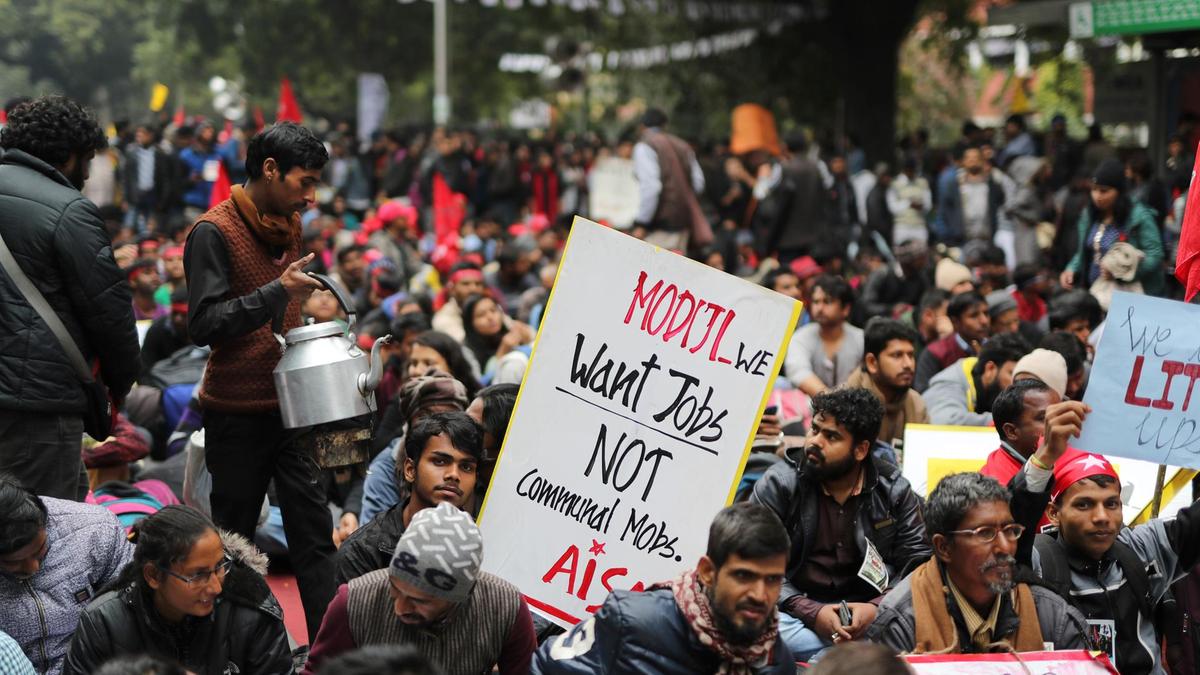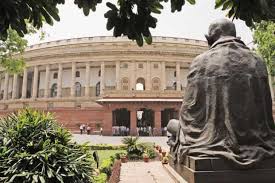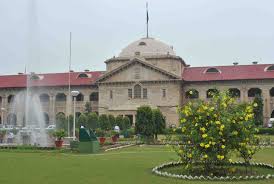The Growing Crisis of Educated Unemployed Youth in India
Causes, Impacts, and Job Solutions
(Media Swaraj Desk )
Educated unemployed youth India are facing most difficult task in finding suitable and stable jobs. Youths living in States like Uttar Pradesh and Bihar hit hardest. Educated unemployment is a big crisis. in India . It needs urgent attention by policy planners. Two-thirds of India’s unemployed youth are educated. Explore the data, causes, and solutions.
From 2013 to 2023, the overall youth unemployment rate (15–24 years) fell from 22% to 15.79%, but educated youth, particularly graduates, face rates as high as 29.1% (2022). The share of educated unemployed youth surged from 50% in 2013 to 65.7% in 2022, exposing a gap between education and employability.
The unemployment rate for graduates was 29.1%, almost nine times higher than for those who are illiterate (3.4%).
India’s youth account for almost 83% of the unemployed workforce.
The share of youngsters with secondary or higher education among the total unemployed rose from 35.2% in 2000 to 65.7% in 2022.
The youth unemployment rate in India has consistently exceeded the global average.
From 2000 to 2022, the share of educated unemployed youth nearly nearly doubled from 35.2% (2000) to 65.7% (2022).
India’s youth unemployment consistently exceeds global averages.
Unemployed Youth in Uttar Pradesh and Bihar
In Uttar Pradesh and Bihar, the crisis of educated unemployed youth is acute, driven by limited job opportunities and systemic challenges. In UP, the youth unemployment rate (15–29) was 2.4% in 2022–23, lower than the national average due to a large rural workforce, but educated youth face higher joblessness (18.4% for those with secondary education).
Bihar reports a 17.5% youth unemployment rate, with graduates facing rates as high as 29.1%. Both states struggle with poor employment outcomes, with Bihar’s educated youth often stuck in agriculture (47% of youth) and UP’s youth competing for scarce government jobs, as seen in 2022 protests over railway job qualifications.
Skills mismatches and low industrialization exacerbate the issue. UP’s informal sector dominates, with 90% of jobs lacking security, while Bihar has only 1.5% of India’s industries. Educated women face higher unemployment (34.5% for female graduates), worsened by social norms. Solutions include boosting manufacturing, aligning education with industry needs, and enhancing vocational training to leverage the states’ young populations (over 50% under 25).
Causes of Educated Unemployment
- Skills Mismatch: Only 51.25% of graduates were employable in 2024, up from 34% in 2014. Outdated curricula and limited vocational training leave many unprepared for industries like IT or manufacturing. For instance, only 25% of engineering graduates are job-ready.
- Insufficient Job Creation: Despite economic growth, job creation lags. Manufacturing employment dropped from 51 million (2016–17) to 27 million (2020–21). Service sector jobs haven’t absorbed enough educated youth, and low-paying gig roles are unappealing.
- High Aspirations and Social Norms: Educated youth, especially in urban areas, often wait for white-collar jobs, prolonging unemployment. In Kerala, 30% prefer joblessness over mismatched roles. Social barriers limit women’s workforce participation to 25%.
- Structural Barriers: Regional disparities (e.g., 29.9% unemployment in Kerala vs. 10% in Madhya Pradesh) and inequalities (e.g., caste, gender) worsen the crisis. Urban unemployment (14.7% in 2022) outpaces rural (8.5%) due to competition.
Societal Impacts of the Crisis
- Economic Loss: With 65.7% of the unemployed being educated youth in 2022, India risks squandering its demographic dividend, reducing GDP and tax revenue. The high NEET rate (48% for young women) strains resources.
- Social Unrest and Mental Health: Prolonged unemployment fuels frustration, sparking protests over job quotas and rising anxiety among graduates, particularly in urban areas.
- Gender Inequality: Educated women face unemployment rates of 34.5% (graduates, 2022) vs. 26.4% for men, reinforcing gender disparities and discouraging female education.
- Brain Drain and Migration: Jobless youth migrate abroad or to cities, causing brain drain in states like Kerala and overburdening urban job markets.
Policy Solutions for Job Creation
To tackle this crisis, India needs inclusive policies that create jobs, empower rural economies, and support the unorganised sector:
- Align Education with Industry and Introduce Skill Training:
- Integrate skills like AI, IoT, and data analytics into curricula, collaborating with industries.
- Introduce skill training at the higher secondary level (e.g., coding, carpentry, electrician, motor mechanic , agro-processing) to prepare students early, bridging the employability gap.
- Expand vocational education and training (VET), inspired by Germany’s dual education model, and reduce dropouts (32.6% by age 18).
- Robust Support for Farmers and Rural Economies:
- Ensure Remunerative Prices: Strengthen Minimum Support Prices (MSP) with transparent, crop-diversified procurement systems covering at least 23 crops, ensuring farmers earn 50% above production costs. Direct payments or price deficiency schemes can stabilise incomes, enabling farmers to invest in labor-intensive activities like organic farming, which employs educated youth.
- Develop Agri-Infrastructure: Invest in rural infrastructure like cold storage, irrigation, and food processing units to create jobs in supply chains. For example, food processing employs 1.8 million and could absorb graduates in roles like quality control or logistics if scaled up. Subsidise solar-powered storage to reduce post-harvest losses (20% for perishables), boosting rural economies.
- Skill-Based Agricultural Training: Launch training programs for youth in precision farming, agri-tech (e.g., drone use), and value-added products like packaged organic goods. Partner with agricultural universities to certify courses, making them attractive to educated youth. In Punjab, such programs have increased youth engagement in farming by 15%.
- Improve Market Access: Expand e-NAM (National Agriculture Market) to connect farmers directly to buyers, reducing reliance on middlemen. Support farmer-producer organizations (FPOs) with grants and digital tools to scale operations, creating managerial roles for graduates. Currently, 7,000 FPOs employ thousands but need more funding.
- Promote Allied Sectors: Encourage dairy, poultry, and fisheries through subsidies and training, as these sectors employ 70 million and offer entrepreneurial opportunities for rural youth. For instance, dairy cooperatives in Gujarat provide stable jobs for educated youth in marketing and tech roles.
- Boost Labor-Intensive Sectors:
- Instead of mass production with the help of big industries the production should be decentralised. Revive manufacturing by supporting micro, small, and medium enterprises (MSMEs), which employ 111 million but face credit hurdles.
- Promote cottage industry where farmers can work in spare time like weaving cloths , carpets and other products.
- Promote green industries (e.g., solar, sustainable agriculture) to create jobs for skilled youth, aligning with India’s climate goals.
- Welfare for Unorganised Workers:
- Implement welfare schemes (e.g., health insurance, pensions, skill-upgrading) to formalise jobs and make gig roles attractive to educated youth.
- Expand e-Shram to provide social security for 90% of India’s informal workforce.
- Enhance Data Systems for Employment:
- Maintain a national database of employed and unemployed youth, integrating PLFS, CMIE, and state surveys for targeted policies.
- Use digital platforms to map skills, vacancies, and regional demands, connecting youth to jobs.
- Support Entrepreneurship and Startups:
- Offer low-interest loans and mentorship for youth-led startups, especially in tier-2 and tier-3 cities.
- Create university-based incubators to foster innovation and link students with markets.
- Increase Female Workforce Participation:
- Provide incentives like flexible hours, childcare, and safe transport to boost women’s employment.
- Launch campaigns to challenge social norms restricting women’s work, particularly in rural areas.
- Strengthen Urban and Rural Job Markets:
- Develop small and satellite cities to ease urban congestion and create job hubs, addressing urban unemployment (14.7% in 2022).
- Leverage digital platforms for freelancing (e.g., coding, design), tapping global markets.
Conclusion
India’s educated unemployed youth, comprising 65.7% of the jobless in 2022, face a crisis driven by skills mismatches, inadequate job creation, and structural barriers. The societal toll—economic loss, gender inequality, and unrest—demands urgent action.
By strengthening farmer support through remunerative prices, agri-infrastructure, and skill-based training, alongside skill training at the higher secondary level, welfare for unorganised workers, and robust employment data, India can create inclusive jobs.
These measures, combined with education reform and industry alignment, will empower youth and unlock India’s demographic potential.





